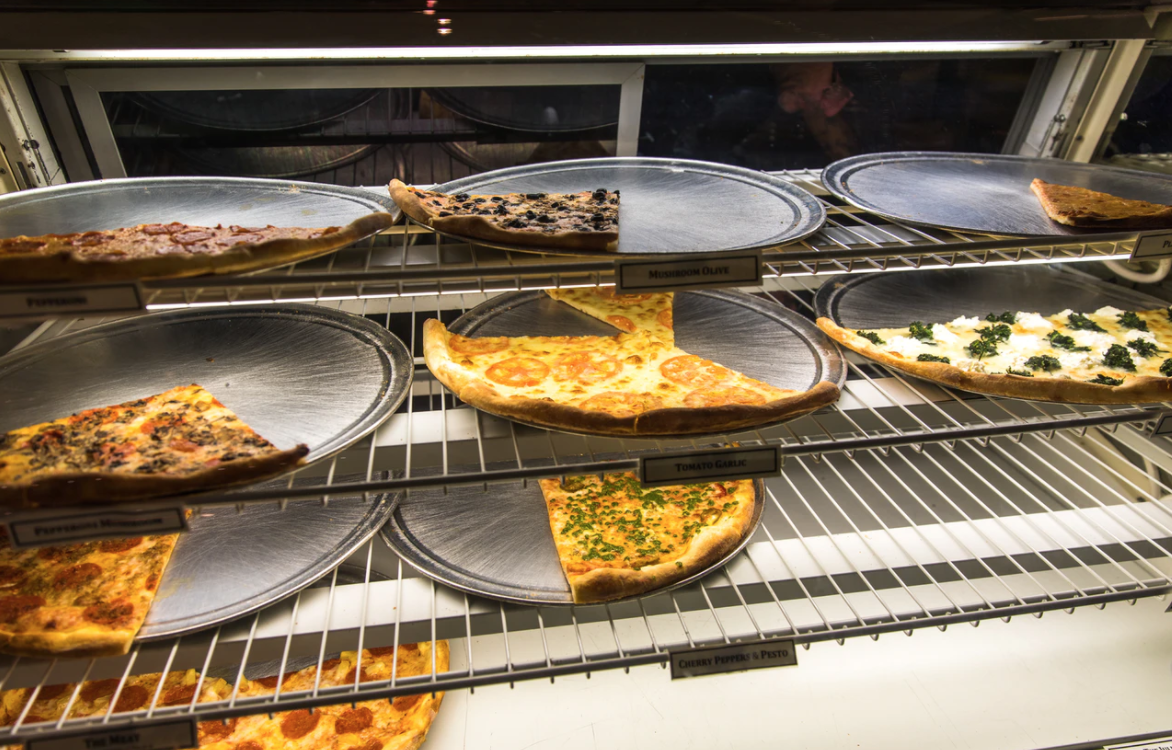Navigate quickly
How Pizza Franchises Are Getting Their Slice Of The Pandemic Pie

How much pizza did your family consume during the pandemic?
The short answer is, more than normal.
Pizza franchises have spent the past two years capitalizing on the pandemic in a service oriented way that benefits everybody. The National Restaurant Association surveyed 3,500 restaurant operations last year, and discovered that 27% of the restaurants added delivery from a third party like DoorDash, Seamless or Uber Eats, while 17% added in house delivery as an option for customers.
There’s been tons of press about this trend, so here’s a quick recap of the best stories we’ve been tracking:
- New York Times: Pizza Was the Restaurant Hero of 2020
- QSR Magazine: Who’s Growing During the Coronavirus Crisis? Pizza Chains
- US News: U.S. Pizza Sales, Booming in Pandemic, Start to Slow
The big question is, why are pizza franchises rolling in the dough, and what can your franchise brand learn from their journey?
Let’s start with the key performance indicators. Pizza franchises were (and still are) deliciously positioned for the covid era for numerous reasons, including:
- Tech that equipped them to pivot quickly to changing preferences
- Touchless customer transactions for social distancing purposes
- Online commerce and digital infrastructure to support remote workers
- Home delivery is a distribution model brands figured out decades ago.
These assets, both operational and technological, allowed franchises like Dominos and PapaJohns to adapt to change quickly and prevent store revenues from dipping too much.
But let’s not forget about the cultural trends which impacted pizza brands getting their slice of the pandemic pie.
Fortune recently reported that pizza delivery brands thrived during the pandemic for additional reasons. It’s perfect inexpensive comfort food during stressful, budget conscious and uncertain times. And there’s no need to even leave the house to eat it, which people literally couldn’t do anyway.
My wife and I ordered and carried out our fair share of pies during the pandemic. With all the uncertainty, change, loss, grief and anxiety in the air, nothing soothed our nerves like an order of PapaJohn’s Seven Cheese Stuffed Cheesesticks (with spicy garlic dipping sauce, of course).
Speaking of which, Papa Johns reported that sales at its North American restaurants saw a 28% increase in the second quarter compared with the year before, with three straight months of double-digit gains.
To keep up with that skyrocketing demand, the company said that it had hired 20,000 additional employees between March and June—and plans on hiring 10,000 more. As of early August, shares of Papa John’s had spiked some 55% this year, after a couple of years of underperforming.
Lesson learned, if you want your franchise to turn devastations and downturns into boons and books, get your technological infrastructure in place. Invest in the digital architecture that will make ordering online fast and easy, make employees accessible via remote locations, and offer whatever touchless transactions will make people feel safe, while also satisfied.
Pizza franchises have certainly gotten more than their slice of the pandemic pie, and we should all tip our chef hats to their example. They’ve leveraged challenging economic and social conditions to be of greater service to customers, franchisees and communities.
Scott Ginsberg is Head of Content at FranchiseHelp. His favorite kind of pizza is Detroit style, despite being from St. Louis.
Ultimate franchising guide
All you need to know as a first time franchisee: Step by step guidance from experienced franchise professionals.















